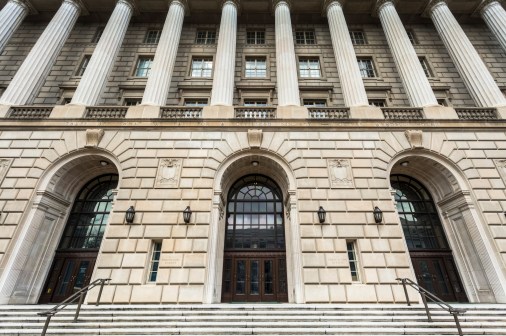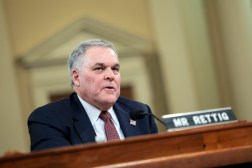Congress pushes for answers on outdated agency IT

An eight-inch floppy disk was the center of attention during a House hearing Wednesday, used to illustrate lawmakers’ argument that federal IT systems are woefully outdated and the people responsible for running them have mismanaged the money given them by Congress.
For Rep. Jason Chaffetz, R-Utah, chairman of the Committee on Oversight and Government Reform, the disk was an example of how agencies are using the majority of their IT budget to maintain out of date systems, including some that are more than half a century old.
“The federal government cannot rely on 930 million lines of code using more than 70 legacy programming languages,” Chaffetz, the committee chair said in his opening remarks. “That includes over 155 million lines of COBOL and 135 million lines of Fortran – coding languages first used in the 1960s. In fact, 50 years ago — 50 years ago — Dartmouth University described Fortran as ‘old fashioned.’ So 50 years ago, they thought it was old fashioned, and it’s still in use today.”
Floppy disks like the one displayed at Wednesday’s hearing are still in use in the Defense Department’s Strategic Automated Command and Control System — among a number of systems highlighted in a scathing Government Accountability Office report released prior to the hearing.
The report listed several systems in use at Defense, Treasury and Department of Veterans Affairs that are decades old.
“Many of these systems are tied to mission critical functions, not just administrative or financial management systems,’ said Dave Powner, GAO’s director of IT management issues. “Not only are these old systems difficult and expensive to maintain because agencies have to rehire retired programmers or pay a premium to vendors for such services, they often pose significant security risks.”
When pressed about the defense system, DOD CIO Terry Halvorsen said the aging command and control center — which coordinates operations for U.S. nuclear forces — is a backup to the backup system currently in place and is not among the most pressing updates needed inside DOD.
“No one is saying we should continue to use the eight-inch disks much longer,” Halvorsen told Rep. Ted Lieu, R-Calif. “While I want to fix it, in the priority of things I need to fix, that will probably be in year three of my next five-year plan. It is not in the top priority of things I want to fix or things you would want me to fix.”
Federal CIO Tony Scott was among the witnesses Wednesday, telling the committee how the Obama administration’s proposed IT Modernization Act would drive civilian agencies to use modern enterprise technology, migrate away from older, less secure systems and coalesce around a small number of common platforms that can be used across the entire federal government.
“We are making progress, just not fast enough,” Scott said.
“It takes too long to put together the money to do the replacements or harvest savings to put together in one place to fix things. There’s a broader set of issues that the fund tries to address. It marries management, money and different mode of operating than the pattern we’ve been in.”
Rep. Gerry Connolly, D-Va., told Scott that for the fund to pass Congress, the Office of Management and Budget must lay out a roadmap for how that fund makes agencies more efficient.
“I think the chairman has expressed that it is counterintuitive that we would actually need to add more money and I think you can sell that plan to Congress if you can demonstrate ‘here will be the payoff, here’s the return on that investment,’” Connolly said.
In the case of IRS, CIO Terry Millholland called for lawmakers to reinstate streamlined critical pay, which would allow the agency to quickly hire top-notch cybersecurity professionals. The IRS used this authority to hire senior IT officials until the provision expired in 2013. The last 10 senior IT officials hired this way will be leaving next year, as the hires are limited to four-year appointments.
This pay was also brought up in a Senate Finance Committee hearing last month, where the IRS commissioner called for the provision to be renewed.
Chaffetz said be it through the IT Modernization Act or the committee’s continued oversight of the Federal IT Acquisition Reform Act, both sides of the aisle need to come together to find a solution to the massively aging systems still in use.
“Taxpayers deserve a government that leverages technology to serve them, rather than one that deploys unsecure, decades old technology that places their sensitive and personal information at risk,” Chaffetz said.
“We have a long way to go to get from COBOL to the Cloud, but I am committed to helping get us there.”
Contact the reporter on this story via email at greg.otto@fedscoop.com, or follow him on Twitter at @gregotto. His OTR and PGP info can be found here. Subscribe to the Daily Scoop for stories like this in your inbox every morning by signing up here: fdscp.com/sign-me-on.




